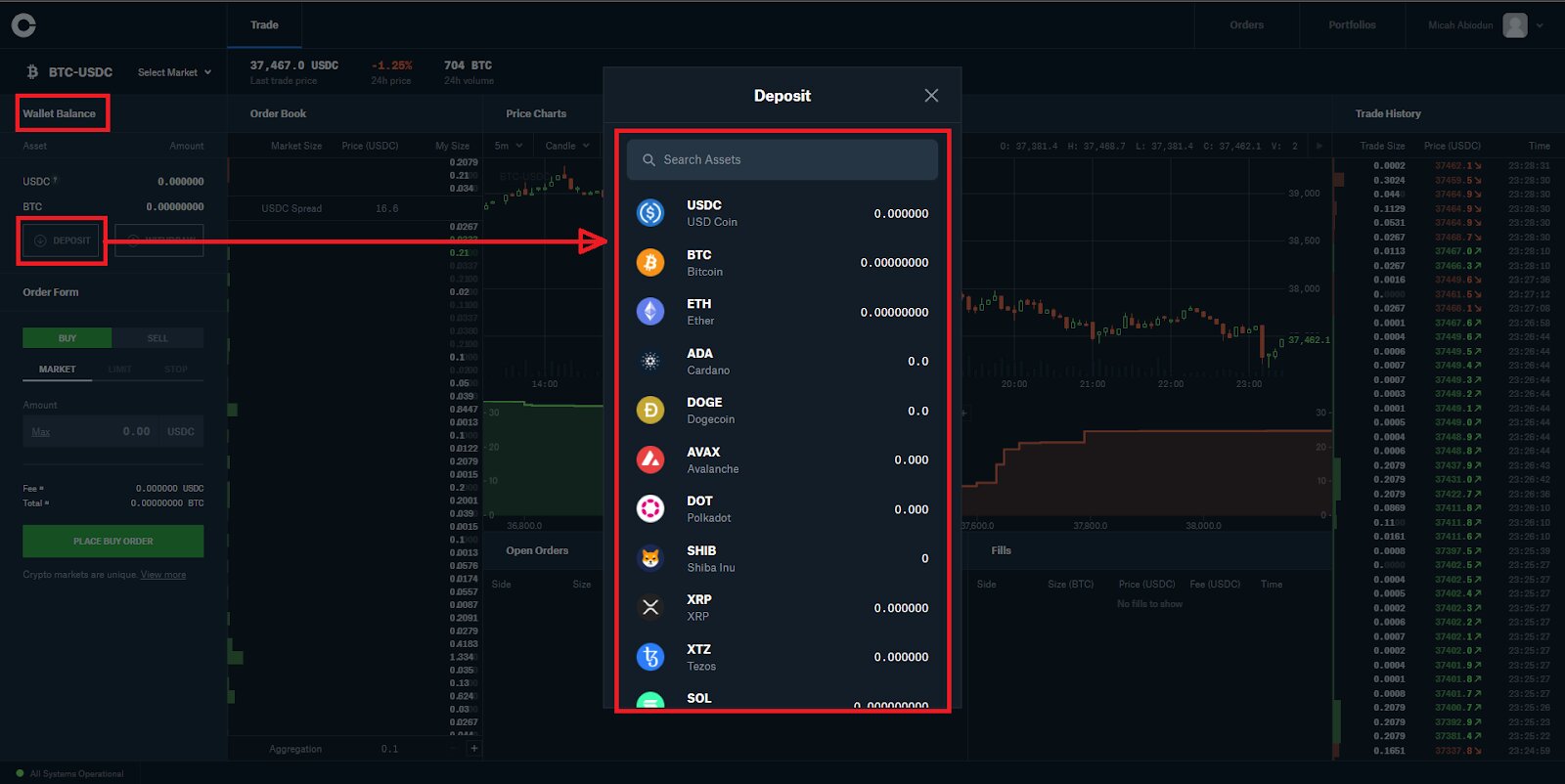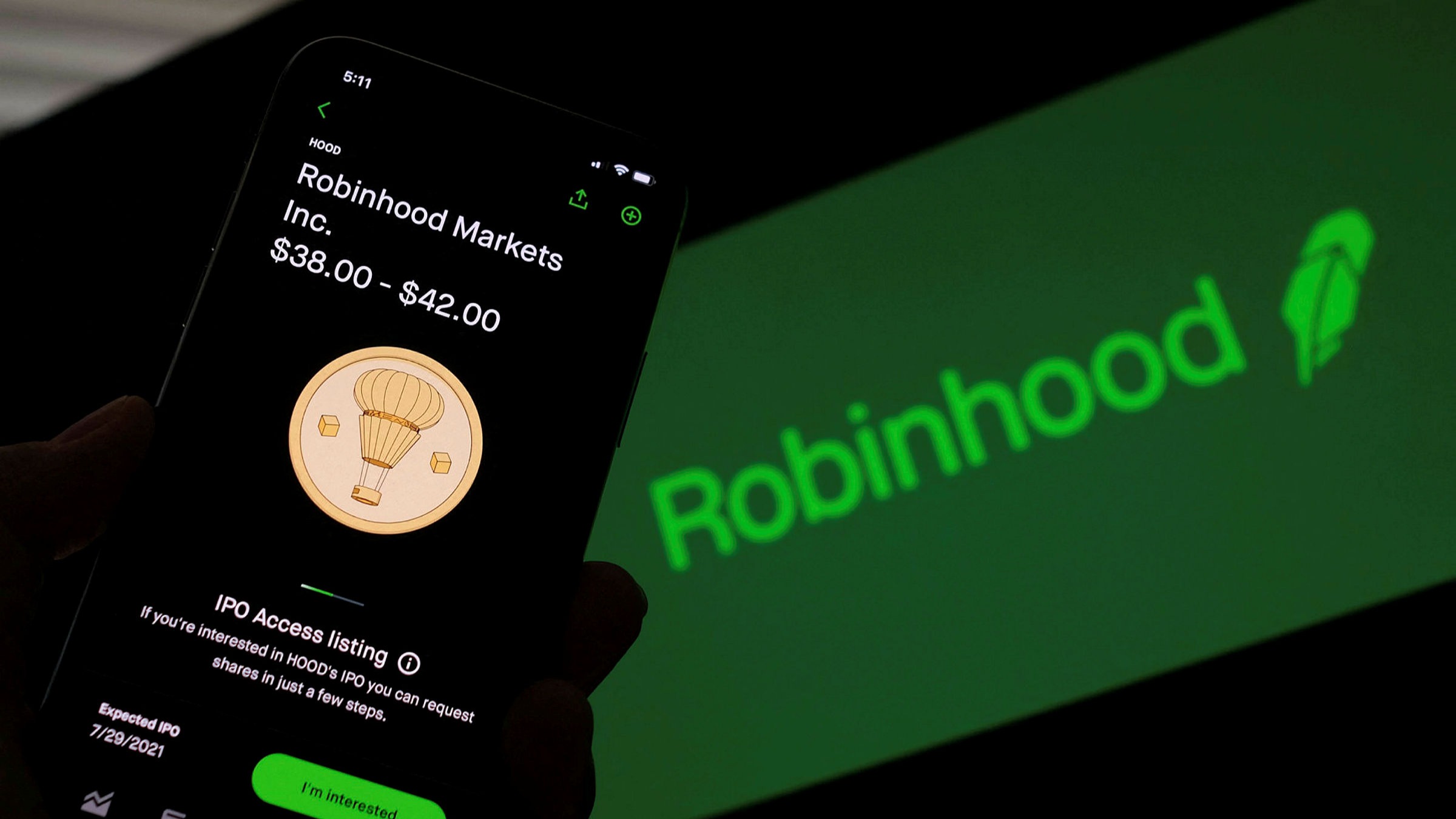Introduction
Cryptocurrencies have become increasingly popular in recent years, revolutionizing the world of finance and investment. These digital currencies offer a decentralized and secure way to store and transfer value, making them an attractive option for individuals looking to diversify their investment portfolio or engage in online transactions. If you’re new to the world of cryptocurrencies and want to get started, opening a cryptocurrency account is the first step towards entering this exciting space.
In this article, we will guide you through the process of opening a cryptocurrency account, so you can begin your journey into the world of digital currencies. We will walk you through the essential steps, including choosing a cryptocurrency exchange, signing up for an account, verifying your identity, setting up two-factor authentication, depositing funds, selecting your preferred cryptocurrencies, understanding wallets and addresses, making your first cryptocurrency purchase, and keeping an eye on your account’s security measures.
Opening a cryptocurrency account may seem overwhelming at first, especially if you’re not familiar with the technical aspects. However, with the right guidance and understanding, you’ll soon be able to navigate through the process smoothly. Before diving in, it’s important to note that cryptocurrency investments come with their own risks, including potential price volatility and security considerations.
As the cryptocurrency market continues to evolve, it’s important to stay informed and exercise caution when engaging in cryptocurrency activities. With the right knowledge and secure practices, you can confidently explore the world of cryptocurrencies and potentially benefit from their growth and innovation.
So, if you’re ready to embark on this exciting journey, let’s delve into the process of opening your own cryptocurrency account and begin your exploration of the digital asset realm.
Choosing a Cryptocurrency Exchange
When it comes to opening a cryptocurrency account, choosing the right cryptocurrency exchange is crucial. A cryptocurrency exchange is a platform where you can buy, sell, and trade cryptocurrencies. There are several factors to consider when selecting an exchange:
- Reputation and Security: Look for exchanges with a solid reputation in the cryptocurrency community and a strong track record of security. Research the exchange’s background, user reviews, and security measures implemented to protect user funds.
- Supported Cryptocurrencies: Different exchanges offer a varying range of cryptocurrencies for trading. Ensure that the exchange you choose supports the cryptocurrencies you wish to trade or invest in.
- User Interface and Experience: A user-friendly interface can make a significant difference, especially for beginners. Look for an exchange with an intuitive and easy-to-navigate interface to simplify the trading process.
- Liquidity: Liquidity refers to the ability to buy or sell an asset quickly without impacting its price. Choose an exchange with high liquidity to ensure smooth and efficient trading.
- Fees: Examine the fee structure of the exchange. Some exchanges charge a percentage of each transaction, while others have a fixed fee. Consider the trading volume you anticipate to determine the most cost-effective option.
- Customer Support: Comprehensive customer support is essential, especially if you encounter any issues or have questions regarding your account. Look for exchanges that offer timely and responsive customer support through various channels.
By carefully considering these factors and conducting thorough research, you can choose an exchange that suits your needs and aligns with your trading or investment goals. Keep in mind that it’s a good idea to diversify your accounts and use multiple exchanges to access a wider range of cryptocurrencies and take advantage of different features offered by each platform. This approach can provide you with more flexibility and options in your cryptocurrency journey.
Signing up for an Account
Once you’ve chosen a cryptocurrency exchange, the next step is to sign up for an account. The process may vary slightly between different exchanges, but the general steps remain similar. Here’s a step-by-step guide on how to sign up for a cryptocurrency account:
- Go to the exchange’s website: Visit the official website of the chosen cryptocurrency exchange.
- Click on “Sign Up” or “Register”: Look for the “Sign Up” or “Register” button on the homepage or in the website’s menu.
- Provide your email and create a password: Enter your email address and create a strong, unique password for your account. Make sure to follow any specific password requirements set by the exchange.
- Complete the verification process: Some exchanges may require you to verify your email by clicking on a link sent to your inbox. Follow the instructions provided to complete this step.
- Fill in your personal information: Depending on the exchange’s policies, you may need to provide additional information, such as your full name, date of birth, and address. This information is typically required to comply with Know Your Customer (KYC) and anti-money laundering regulations.
- Read and agree to the terms of service: Take the time to carefully review the exchange’s terms of service. If you agree to the terms and conditions, check the box or click the button indicating your acceptance.
- Submit your registration: Once you’ve provided all the necessary information and agreed to the terms of service, click on the “Register” or “Submit” button to complete the registration process.
After completing these steps, you may receive a confirmation email or notification indicating that your account registration was successful. From there, you can proceed to the next steps, such as verifying your identity and setting up additional security measures to protect your account and funds.
It’s important to note that the registration process may involve additional steps, such as providing identification documents or undergoing further verification. These requirements are in place to ensure the security and integrity of the exchange, as well as to comply with regulatory standards. Follow the instructions provided by the exchange to complete any additional verification steps promptly.
Verifying Your Identity
Verifying your identity is an essential step in opening a cryptocurrency account, as it helps ensure the security and compliance of the exchange. Verification processes may vary between exchanges, but they generally involve providing certain documents to confirm your identity. Here’s a guide on how to verify your identity on a cryptocurrency exchange:
- Access your account settings: After successfully signing up for an account, log in to your account and locate the account settings or profile section.
- Find the verification section: Look for a specific section or tab related to identity verification in your account settings. It may be labeled as “KYC Verification” or something similar.
- Follow the instructions: The verification process typically involves providing personal identification documents. Commonly requested documents include a government-issued ID card, passport, or driver’s license. You may also need to provide proof of address, such as a utility bill or bank statement.
- Upload your documents: Follow the instructions provided by the exchange to upload clear and legible copies of your identification documents. Ensure that the documents meet the specified format and size requirements.
- Wait for verification: Once you’ve submitted your documents, the exchange’s verification team will review them. The process may take a few hours to several days, depending on the exchange’s workload. Some exchanges provide status updates, allowing you to track the progress of your verification.
- Confirmation of verification: Once your identity has been successfully verified, you will receive a confirmation email or notification. At this point, you’ll have access to additional features and higher transaction limits on the exchange.
It’s essential to provide accurate and up-to-date information during the verification process. Any discrepancies or inconsistencies may lead to delays or rejection of your verification. Additionally, make sure to follow the exchange’s guidelines regarding document format, size, and any other requirements to ensure a smooth verification process.
Verification helps maintain the security of the exchange and minimizes the risks associated with fraudulent activities. It also ensures compliance with regulations imposed by financial authorities in various jurisdictions. By completing the verification process, you can gain access to the full features and benefits of the cryptocurrency exchange and engage in secure and legal transactions.
Setting up Two-Factor Authentication
Two-factor authentication (2FA) is an additional layer of security that adds an extra step to the login process of your cryptocurrency account. It helps protect your account from unauthorized access and provides an added level of peace of mind. Setting up 2FA is highly recommended to enhance the security of your cryptocurrency holdings. Here’s how you can set up 2FA on a cryptocurrency exchange:
- Access your account settings: Log in to your cryptocurrency exchange account and navigate to the account settings or security settings section.
- Enable two-factor authentication: Look for the option to enable 2FA. This may be labeled as “Two-Factor Authentication,” “2FA,” or something similar.
- Choose the preferred method: There are usually different 2FA methods available, such as SMS authentication, authenticator apps (like Google Authenticator or Authy), or hardware security keys. Select the method that suits you best.
- Follow the instructions: Depending on the method you choose, you’ll need to follow different instructions. For SMS authentication, you’ll need to enter your phone number and verify it by entering a code sent to your phone. For authenticator apps or hardware security keys, you’ll need to scan a QR code or manually enter a code provided by the exchange.
- Finish the setup: Once you’ve completed the necessary steps, the 2FA will be activated on your account. You may be required to enter a one-time code to verify that the setup was successful.
- Keep backup codes: It is crucial to make a note of any backup codes provided by the exchange. These codes can be used in case you lose access to your 2FA device or encounter any issues with authentication.
- Test your 2FA: After enabling 2FA, it’s a good practice to test the setup by logging out of your account and logging back in. This will ensure that the 2FA process is working correctly and that you’re able to access your account securely.
Two-factor authentication adds an extra layer of protection to your cryptocurrency account, making it significantly more challenging for unauthorized individuals to gain access. By implementing this security measure, you can greatly reduce the risk of unauthorized access or potential theft of your digital assets.
Remember to keep your 2FA device or app secure and to avoid sharing your backup codes with anyone. Regularly review your 2FA settings and consider periodically updating your authentication method or changing your backup codes for added security. These precautions will help safeguard your cryptocurrency holdings and provide you with added peace of mind in the ever-evolving digital landscape.
Depositing Funds into Your Account
After successfully setting up your cryptocurrency account, the next step is to deposit funds into it. Depositing funds into your account allows you to have capital available for purchasing and trading cryptocurrencies. Here are the steps to deposit funds into your cryptocurrency account:
- Log in to your account: Visit the cryptocurrency exchange’s website and log in to your account using your credentials.
- Navigate to the deposit section: Look for the “Deposit,” “Funds,” or “Wallet” section within your account. It may be located in the main menu or in your account settings.
- Select the cryptocurrency: Choose the specific cryptocurrency that you want to deposit into your account. If the exchange supports multiple cryptocurrencies, ensure that you select the correct one.
- Generate a deposit address: The exchange will provide you with a unique deposit address for the selected cryptocurrency. This address is essential for ensuring that your funds are credited to your account properly.
- Copy the deposit address: Carefully copy the deposit address provided by the exchange. Double-check to ensure that it is accurate and complete. Cryptocurrency addresses are typically a long string of alphanumeric characters.
- Transfer funds to the deposit address: Open your personal cryptocurrency wallet or the wallet of the exchange where your funds are currently located. Initiate a transfer to the deposit address you copied from the exchange. Ensure that you enter the correct amount and double-check the address before confirming the transfer.
- Wait for confirmation: After initiating the transfer, you will need to wait for the transaction to be confirmed on the blockchain. The time taken for confirmation depends on the cryptocurrency and the network traffic. You can track the progress of the transaction using a blockchain explorer.
- Check your account balance: Once the transaction is confirmed, the funds will be credited to your cryptocurrency account. Check your account balance within the exchange to confirm that the deposit has been successfully completed.
It’s important to note that some exchanges may require confirmations from multiple blocks on the blockchain before the funds are fully available for trading or withdrawal. Additionally, pay attention to any minimum deposit requirements or fees associated with depositing funds into your account.
By following these steps, you can deposit funds into your cryptocurrency account and have them ready for trading or investing in the various cryptocurrencies offered by the exchange. Always ensure that you are depositing funds into the correct wallet and verify the deposit address to avoid any loss of funds.
Selecting Your Preferred Cryptocurrencies
Once you have funds in your cryptocurrency account, it’s time to choose which cryptocurrencies you want to invest in or trade. With thousands of cryptocurrencies available in the market, selecting the ones that align with your investment goals and risk tolerance is essential. Here are some factors to consider when selecting your preferred cryptocurrencies:
- Research and understand the cryptocurrencies: Before making any investment decisions, it’s crucial to research and understand the fundamentals of the cryptocurrencies you are interested in. Familiarize yourself with their technology, use cases, team, market capitalization, and historical performance. This will help you make informed decisions based on the potential value and growth prospects of each cryptocurrency.
- Consider your investment goals: Determine whether you are looking for short-term gains or long-term investment opportunities. Some cryptocurrencies may be more suitable for day trading, while others may be better suited for long-term holding.
- Analyze market trends and indicators: Keep an eye on market trends, news, and indicators that can impact the value of cryptocurrencies. Analyze charts, use technical analysis tools, and stay informed about market sentiment to identify potential opportunities and risks.
- Consider risk and diversification: Assess your risk tolerance and consider diversifying your cryptocurrency portfolio. Investing in a mix of established cryptocurrencies and emerging ones across different sectors can help mitigate risk and increase the potential for returns.
- Review the liquidity and trading volume: Liquidity is crucial when it comes to trading cryptocurrencies. Choose cryptocurrencies that have sufficient trading volume and liquidity to ensure you can buy and sell them without causing significant price fluctuations.
- Evaluate the development community and partnerships: The strength of a cryptocurrency’s development community and partnerships can provide insights into its future potential. Look for cryptocurrencies with active development teams and strategic partnerships that could drive adoption and growth.
- Consider regulatory factors: Stay informed about the regulatory landscape surrounding cryptocurrencies. Some jurisdictions may impose restrictions or regulations that can impact the value and viability of certain cryptocurrencies.
It’s important to remember that the cryptocurrency market is highly volatile and can be subject to sudden price swings. Have a clear investment strategy, set realistic goals, and regularly review and adjust your portfolio based on market conditions and your investment objectives.
By considering these factors and conducting thorough research, you can select cryptocurrencies that align with your investment goals and risk tolerance. Diversification and staying informed will help you navigate the dynamic world of cryptocurrencies and increase your chances of achieving your desired outcomes.
Understanding Wallets and Addresses
When it comes to cryptocurrencies, wallets play a crucial role in storing, managing, and transacting with your digital assets. Understanding how wallets work and how to use cryptocurrency addresses is essential to navigate the world of cryptocurrencies securely. Here’s a breakdown of wallets and addresses:
Wallets:
Cryptocurrency wallets are digital tools that allow you to store, send, and receive cryptocurrencies. They come in different forms, including:
- Software Wallets: These wallets are software applications installed on your computer or mobile device. They provide a user-friendly interface to manage your cryptocurrencies. Examples include desktop wallets and mobile wallets.
- Hardware Wallets: Hardware wallets are physical devices that securely store your private keys offline. They are considered one of the most secure methods of storing cryptocurrencies.
- Web-Based Wallets: These wallets are accessible through web browsers and are provided by cryptocurrency exchanges or online wallet providers. While they offer convenience, they may not provide the same level of security as hardware wallets.
- Paper Wallets: A paper wallet is a physical printout of your wallet’s public and private keys. It offers an offline storage option, but caution must be taken to ensure the paper wallet is safely stored and not compromised.
It’s important to note that cryptocurrency wallets do not actually “store” coins but rather store the private keys that grant access to your cryptocurrency holdings on the blockchain. These private keys allow you to sign transactions and prove ownership of your cryptocurrencies.
Addresses:
Cryptocurrency addresses are alphanumeric strings used to identify recipients and send funds on the blockchain. Each cryptocurrency has its own unique address format. When receiving funds, you provide the sender with your cryptocurrency address, and they send the funds to that address.
A cryptocurrency address consists of two parts: the public key and the private key. The public key is the address you share with others to receive funds, while the private key remains secret and is used to access and manage your funds. Sharing your private key can lead to unauthorized access and potential loss of your cryptocurrencies.
It’s important to double-check the accuracy of addresses when sending or receiving funds. Sending funds to the wrong address can result in permanent loss of your cryptocurrencies, as transactions on the blockchain are irreversible.
Understanding wallets and addresses is vital to securely manage your cryptocurrencies. Choose a wallet that aligns with your needs and security preferences, regularly back up your wallet, keep your private keys secure, and exercise caution when sharing your cryptocurrency address.
Making Your First Cryptocurrency Purchase
Once you have set up your cryptocurrency account, deposited funds, and selected the cryptocurrencies you want to invest in, you are ready to make your first cryptocurrency purchase. The process may vary slightly depending on the exchange you are using, but the general steps remain the same. Here is a guide on how to make your first cryptocurrency purchase:
- Choose the cryptocurrency to purchase: Select the specific cryptocurrency you want to buy. Consider factors such as its price, market performance, and future potential.
- Access the trading platform: Navigate to the trading platform or exchange section of your cryptocurrency account. Look for options like “Buy” or “Trade” related to the chosen cryptocurrency.
- Select the trading pair: Choose the trading pair you wish to use for your purchase. For example, if you want to buy Bitcoin (BTC) using US dollars (USD), your trading pair would be BTC/USD.
- Enter the purchase details: Specify the amount of cryptocurrency you want to purchase or the amount of your base currency (e.g., USD) that you want to spend. Review the exchange rate and any applicable fees associated with the transaction.
- Review and confirm the transaction: Double-check all the details entered, including the purchase amount and wallet address. Take a moment to review the transaction summary to ensure accuracy. Confirm the purchase when you are satisfied with the details.
- Wait for the transaction to complete: Depending on network congestion and other factors, the time it takes for your transaction to complete can vary. Stay patient and monitor the transaction status if your exchange provides a tracking feature.
- Verify the transaction: Once the purchase is complete, verify that the cryptocurrency has been credited to your account. Check your account balance or wallet to confirm that the purchased cryptocurrency is available.
- Secure your purchased cryptocurrency: After completing the purchase, it is essential to take steps to secure your purchased cryptocurrency. Consider transferring it to your personal wallet, preferably a hardware wallet or a secure software wallet that you control.
It’s important to note that the cryptocurrency market can be highly volatile, and prices can fluctuate rapidly. It is recommended to have a clear investment strategy, set realistic goals, and carefully consider your risk tolerance before making any purchases. Regularly monitor the market and adjust your investment strategy as needed.
By following these steps, you can make your first cryptocurrency purchase and become a part of the exciting world of digital assets. Remember to stay informed, diversify your investments, and keep your security measures up to date to make the most of your cryptocurrency experience.
Monitoring Your Account and Security Measures
Once you have opened a cryptocurrency account and started engaging in cryptocurrency transactions, it’s important to actively monitor your account and take necessary security measures to protect your funds. Here are some tips for monitoring your account and maintaining security:
- Regularly review your account activity: Keep an eye on your account activity to ensure that all transactions are legitimate. Check for any unauthorized access attempts or suspicious activity. If you notice anything unusual, contact the exchange’s support immediately.
- Enable email and account notifications: Many cryptocurrency exchanges offer email or account notifications for various activities, such as login attempts, withdrawals, or account setting changes. Enable these notifications to stay informed about any account-related activities.
- Monitor the cryptocurrency market: Stay updated with the latest news and market trends. The cryptocurrency market can be volatile, and staying informed will help you make informed decisions about your investments and take advantage of potential opportunities.
- Regularly update your passwords: Change your account passwords periodically, and ensure that they are strong and unique. Avoid reusing passwords across different platforms. Consider using a password manager to securely store and manage your passwords.
- Consider multi-factor authentication: In addition to two-factor authentication (2FA), explore whether your exchange offers other security measures, such as multi-factor authentication (MFA). MFA adds an extra layer of security by requiring additional authentication factors, such as biometrics or hardware keys.
- Be cautious of phishing attempts: Stay vigilant against phishing attacks, where attackers attempt to trick you into revealing your account credentials or personal information. Verify the authenticity of emails, links, and messages before providing any sensitive information.
- Keep your software and devices updated: Regularly update your operating system, web browsers, and security software to safeguard against potential vulnerabilities. Outdated software can be exploited by hackers to gain unauthorized access to your accounts.
- Use hardware wallets for long-term storage: Consider using a hardware wallet for storing your cryptocurrencies for the long term. Hardware wallets provide an added layer of security by keeping your private keys offline and out of reach of potential hackers.
- Backup your wallet: Regularly back up your wallet or store the recovery phrase provided by your wallet software in a safe and secure location. This ensures that you can recover your funds in the event of a hardware failure, loss, or theft.
By staying vigilant and implementing these security measures, you can minimize the risk of unauthorized access to your cryptocurrency account and protect your investments. Regularly review and update your security practices to stay ahead of potential threats in the ever-evolving landscape of cryptocurrencies.
Conclusion
Opening a cryptocurrency account is the first step towards entering the world of digital assets. By following the steps outlined in this guide, you can navigate through the process seamlessly and begin your cryptocurrency journey with confidence. From choosing a trusted exchange to verifying your identity, setting up two-factor authentication, and making your first cryptocurrency purchase, each step is essential in creating a secure and successful cryptocurrency account.
Throughout your cryptocurrency endeavors, it’s crucial to stay informed about the latest market trends, be aware of the risks involved, and maintain strong security practices. Regularly monitor your account for any suspicious activities and take necessary precautions to protect your funds and personal information. By staying vigilant, you can mitigate risks and participate in the exciting opportunities offered by the cryptocurrency industry.
Remember to conduct thorough research before making any investment decisions, diversify your portfolio, and periodically review your investment strategy. The cryptocurrency market is highly volatile, and it’s essential to set realistic goals and be prepared for market fluctuations.
As the cryptocurrency industry continues to evolve and gain mainstream adoption, it’s important to stay updated with new developments and regulations. Stay engaged with the cryptocurrency community, join relevant forums, and seek advice from trusted sources to enhance your knowledge and understanding.
By following these guidelines and taking active measures to protect your account and investments, you can embark on a rewarding journey in the world of cryptocurrencies. Embrace the opportunities, manage the risks, and enjoy the benefits of this revolutionary form of digital finance.

























